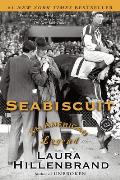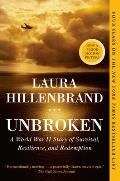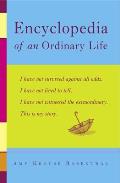 |
[NOTE: I am not a doctor. This post describes our own personal experiences and what I have learned from research and our medical team. You should work with your own doctor on your own unique case to find what works for you. Don't have a doctor who understands how to treat ME/CFS? This post explains how to find a doctor who can help you. You don't necessarily need an expert - just someone willing to learn more and work with you.]
UPDATED 6/28/23
Since the first years of my illness, 15 years ago, I have been hearing how important glutathione is to ME/CFS patients (and those with fibromyalgia and Lyme disease, too). It's taken me all these years, though, to finally learn more about glutathione, understand why it's so important, and see the full positive effects of increasing glutathione.
My son and I saw our ME/CFS specialist, Dr. Susan Levine, in September last year, and she asked what our biggest problems were. I said immune system dysfunction because both of us struggle with chronic yeast overgrowth, and we both get bacterial bronchitis multiple times (sometimes up to 4 or 6 times) a year, which requires antibiotics, which in turn makes the yeast problems even worse. Since we already take the top two immune modulators typically used for ME/CFS - low-dose naltrexone and inosine (aka Imunovir)--and both have helped us (especially in reducing virally-triggered crashes)--she suggested we add something new: intramuscular (IM) glutathione injections.
So, we started those after our visit, twice a week, and wow, what a difference it has made! I just went through an entire winter without getting bronchitis once (I usually get it 2 or 3 times a winter), and I get a big energy boost from the glutathione, too. My son has trouble remembering to do his glutathione injections regularly while at college, but when he does, he also notices increased energy and well-being. I am trying to remind him to do them regularly in the hopes that he will also get less bronchitis this year (he had a typical winter, with 3 bouts of bronchitis). It should also help with his Lyme disease and the Herx reactions (worsening) that result from treating it.
Update: As soon as glutathione was available through compounding pharmacies s a nasal spray, we switched to that form. Our doctor said it's even more effective than the intramuscular injections ... and far less painful! This helps us both to keep up with it better, using the nasal spray every morning. We made that switch over five years ago, and it's still working well for us.
What Is Glutathione and Why Is It Important?
In the simplest terms, glutathione is a naturally occurring compound in the human body, a strong antioxidant that helps our bodies to deal with toxins. It is a product of the methylation cycle, which is of primary importance to ME/CFS and long-COVID patients (and those with fibromyalgia and Lyme) and usually severely dysfunctional (see information at the link on how to improve methylation). A lack of glutathione can lead to oxidative stress, which has been shown to be a large part of the exertion intolerance (aka Post-Exertional Malaise or PEM) that is a defining characteristic of ME/CFS.
The Wikipedia entry for glutathione says that the human body makes plenty of glutathione on its own, so it does not need to be supplemented. That is true for healthy people, but glutathione levels have been shown to be low in those with ME/CFS, contributing to low energy, immune dysfunction, detoxing problems, and exercise intolerance. Since our bodies can't make enough glutathione on their own, increasing glutathione through supplementation can be a helpful treatment for ME/CFS patients. My son and I have found it to help increase energy, reduce exercise intolerance, and improve immune function.
How Do I Increase Glutathione?
Increasing glutathione in your body to normal levels is not as simple as just taking a single pill. There are multiple approaches that include helping your body to make more glutathione on its own and supplementing with certain forms of glutathione that your body can use effectively.
Glutathione Precursers:
One way to increase your body's production of glutathione is to give it more of the raw materials (precursers) that it needs to make glutathione (links are to our favorite products). These include:
- Milk Thistle
- N-Acetyl-Cysteine (NAC)
- Turmeric/curcumin (not technically a precurser but curcumin--the main ingredient in the spice turmeric--encourages production of glutathione in the body and helps with detox)
- Undenatured whey protein (read the label to ensure it has no additives--this is our favorite brand)
[NOTE ON WHEY: For many years, I knew that whey was an important precursor to glutathione but thought that my son and I couldn't eat it because we are dairy intolerant (as are 30% of ME/CFS patients, according to a recent study). I was thrilled when our dietician/biochemist explained that when whey is separated from the rest of milk (the curds--remember Miss Muffet, eating her curds and whey?), almost all of the lactose and most of the casein (a protein in milk) is in the curds, leaving whey to be well-tolerated by many people who are dairy-intolerant. We tried it and were happy to discover she was right--we can both tolerate whey protein powder with none of the usual side effects we get from full dairy products.
UPDATE 6-28-23: I have recently discovered through food intolerance testing that I am sensitive to lactose, casein and whey! So, I tolerate it once in a while and still have my favorite Paleo smoothie once or twice a week, but I can't have it every day. But that's me. If you're just lactose-intolerant, then you shouldn't have a problem with whey.]
Supplementing with Glutathione:
Although it is tricky to supplement directly with glutathione--to get it into the cells where it can be useful--there are several approaches that can work:
- S-Acetyl Glutathione - a form that can get into the cells - our dietician recommended we take this at bedtime.
- Liposomal Glutathione - glutathione that is encased in little fat spheres (to put it simply!) that enable it to get to the cells where it is needed. Available in liquid or softgels. We used this before we switched to injections (it tasted pretty nasty back then, but now it says "new improved flavor!"). Note that any kind of oral glutathione, including liposomal, is less effective than injections, IV's, or nasal spray.
- Intramuscular injections or intravenous glutathione - these deliver glutathione directly to the bloodstream. When we switched from liposomal glutathione to intramuscular injections, we definitely noticed an improvement. I went from getting bronchitis 4-5 times a year to going over 18 months without getting it once! Occasionally, we each get IV glutathione from our Lyme specialist, which is even more effective. Injections require a prescription and must be obtained through a compounding pharmacy (which is simple and inexpensive).
- Glutathione Nasal Spray - a newer way to get glutathione directly into the bloodstream--as effective (maybe even more so) as injections but without the pain! Also requires a prescription through a compounding pharmacy--see UPDATE at the end of this post for details).
How To Get Started
It's always best to start with a doctor or other knowledgeable medical personnel (like our dietician who also has a MS in biochemistry or our functional medicine specialist). You can see one of the ME/CFS specialists - there are about a dozen across the U.S. and others overseas - or a local doctor or other medical professional who understands ME/CFS or is at least willing to learn. If necessary, print some of the information from this post and its links to help educate your doctor. Most of the treatments listed above are supplements that don't require a doctor, but it is always good to consult with one, if you have one who understands ME/CFS. See Finding a Doctor for lists of specialists and tips on finding one who can help.
You can start with the prescursors listed above, to help your body produce more glutathione on its own. ALWAYS--as with any ME/CFS treatment--start very slowly and go gradually. Begin with just one supplement, at a low dose, and see how you tolerate it. Improving methylation and increasing glutathione can sometimes produce a temporary worsening (a Herx reaction), as your body improves its ability to deal with toxins and moves them into the bloodstream to get rid of them. The best approach to a Herx (worsening) is to reduce the dose to where the Herx is tolerable and wait to increase until you are at least back to baseline or feeling better.
Milk thistle is an ideal supplement to start with, if you aren't already taking it. It has multiple functions, most importantly helping to improve liver function, i.e. helping your body to process medications and supplements as well as harmful byproducts that your body produces. By starting with milk thistle and improving liver function, you can both increase glutathione and help your body to tolerate additional supplements. Turmeric or curcumin also has multiple purposes, helping to reduce inflammation, improve detox, and increase glutathione.
When I added NAC (many years ago), I felt an immediate improvement in energy, so that is a good one to add next. My son and I also both get a nice boost from whey protein powder, too--we use it in smoothies. This is our recipe for a Chocolate-Banana Smoothie--our favorite lunch! Tastes decadent and has several ingredients that help with energy.
The S-Acetyl Glutathione is absorbed differently by your body, so it can be used WITH either liposomal glutathione or injections/nasal spray (but the liposomal and injections/nasal spray are either/or). You can buy liposomal glutathione as a supplement in various forms, but the injections or nasal spray require a prescription (you get it from a compounding pharmacy, which is simple and inexpensive).
(Note that if money is an issue, milk thistle, NAC, and curcumin are all fairly cheap and quite important. Injectable glutathione is MUCH cheaper (and far more effective) than liposomal glutathione in either liquid or pill form. Whey powder seems expensive but one of those big canisters can last quite a while (and you can get a smaller canister). Beware of buying whey powder at the drugstore or grocery store--read the labels carefully as many of the more common commercial brands sold for athletes have LOTS of additives.)
As with any treatments for ME/CFS, START LOW AND GO SLOW! Add one supplement at a time, starting with a low dose, and increase as tolerated.
I highly recommend you also take a look at this article on Phoenix Rising on Augmenting Glutathione in ME/CFS. It was written by Rich Van Konyenburg, who also developed one of the first methylation protocols and was one of the first to recognize the importance of glutathione in ME/CFS.
I have included some links in this article and below to the products we have tried and found to be effective for increasing glutathione. A few notes:
The Natural Force whey powder is a 'cleaner" product with no added ingredients, but we like the taste of the Bluebonnet brand better (it has natural vanilla flavor and MCT oil added in, which is also good for us and that's two fewer ingredients to remember when we make our smoothie!
Curcumin is a potent anti-inflammatory, as well as encouraging production of glutathione. Meriva is a brand of phytosome curcumin that our dietician likes as it is well-absorbed. My husband and I now take curcumin with black pepper, as that also helps with absorption. Either of those is a great choice.- It has been very helpful for all of us for joint pain and managing Herx reactions, in addition to its role in promoting glutathione production.
Please let me know if you have any questions. If you have any experience in increasing glutathione, please share it in the comments below, so we can all learn from each other!
UPDATE 4/12/18:
There is a new form of glutathione delivery now available - a nose spray that is even more effective than injections! No more big needles! It can be obtained from a compounding pharmacy (the concentration is either 100 or 200 mg/ml in plain saline), and the dose is 1-2 sprays in ONE nostril each day (alternate nostrils each day). Our ME/CFS expert doctor explained that the nasal spray is safe and effective, and this study bears that out (great for sharing with your doctor).
The best approach is to get a prescription from your doctor and order it from a compounding pharmacy (this post explains details and links--Skip's is a great source but most compounders can make it).
If you can not get a prescription, there appear to be two commercial brands available: Ageless Rx and Glutastat (though this has other added ingredients in it)
NOTE: DO NOT buy glutathione mouth sprays. The pH in our mouths immediately renders the glutathione unusable, and it never gets into the bloodstream where it is needed - these are just a waste of money (and if you search for glutathione nasal sprays online or on Amazon, a bunch of mouth sprays will come up, so read carefully).Our experience? My son switched to the nose spray back in February 2018, as soon as we found out about it. He admitted to me that he hadn't been doing the IM injections because they hurt too much (they definitely take some practice to master), so we switched him immediately (I used up the last of the injectible solution we had and then switched, too). His energy improved, he remembers it most days, and he is still using that first bottle we bought, so it lasted awhile. Best of all? He came home from spring break two weeks ago with some chest congestion, which for him always means bacterial bronchitis. This time, though, he felt fine after a few days of coughing, and he did not need to go on antibiotics - hurray! So, the glutathione seems to be having the same positive immune system effects for him that is has for me...and the nasal spray is much easier, more convenient, and far less painful for him to use. I'm switching, too!
UPDATE 5/7/20:
With a steep downturn in his health this year (due to his tick infections), my son also started a weekly glutathione IV (and also a weekly Myer's Cocktail IV, a mix of vitamins and nutrients). This helped him immensely, with both energy and his severe Herx reactions, finally allowing him to slowly increase the dose of his treatments. He had to quit the IV's temporarily during the coronavirus pandemic and is definitely missing them. He and I both still take the nasal spray daily.
























